Many drainage cover products have maintained a specific definition of their types since their introduction. However, sump covers have been misunderstood as a different name or even a different product across the world. Most of the time, the mismatch is caused by differences in US and UK English that different countries adopt, and a loose interpretation of what a sump cover is.
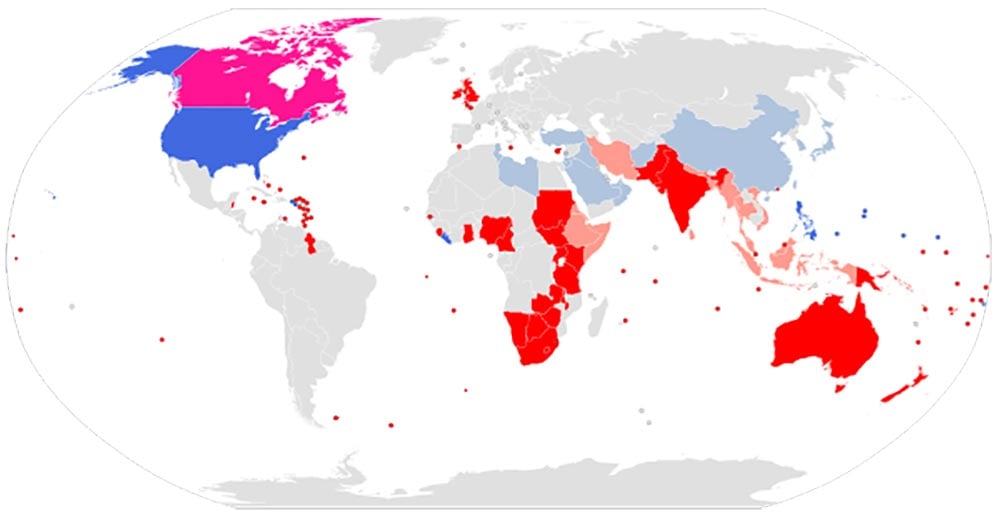 A world map showing countries that use British English (red, beige, pink) and American English (blue, bluish grey)
A world map showing countries that use British English (red, beige, pink) and American English (blue, bluish grey)
A quick search of sump covers may produce different product search results, with some countries having sump covers but of a different function. Other countries would label sump covers as other names like maintenance hole covers, which in the context of this country is correct, but wrong in another country that has both a sump cover and maintenance hole cover as two separate products.
 Getting confused with the various product names even on product websites
Getting confused with the various product names even on product websites
Additionally, as more manufacturers and distributor sites adopt all these different names, with more architects and estate owners visiting these sites, the naming confusion of sump covers grows. In this article, we'll help to breakdown all the common alternate names a sump cover gets confused with and how to differentiate it. The terms include:
- storm drain covers
- point drainage covers
- sump covers
- catch basin grates
- manhole cover
- access cover
Now let's get to solving out this significant name confusion before another sump cover misnaming comes.
Storm Drain Cover
A storm drain cover is not a specific product name, rather a category for a range of drain cover products. A Storm drain (a.k.a surface water drain/sewer ( in the United Kingdom) or stormwater drain (in Australia and New Zealand)) is an underground water pipe network, channeling rainwater and groundwater from various inlets into water bodies like rivers.
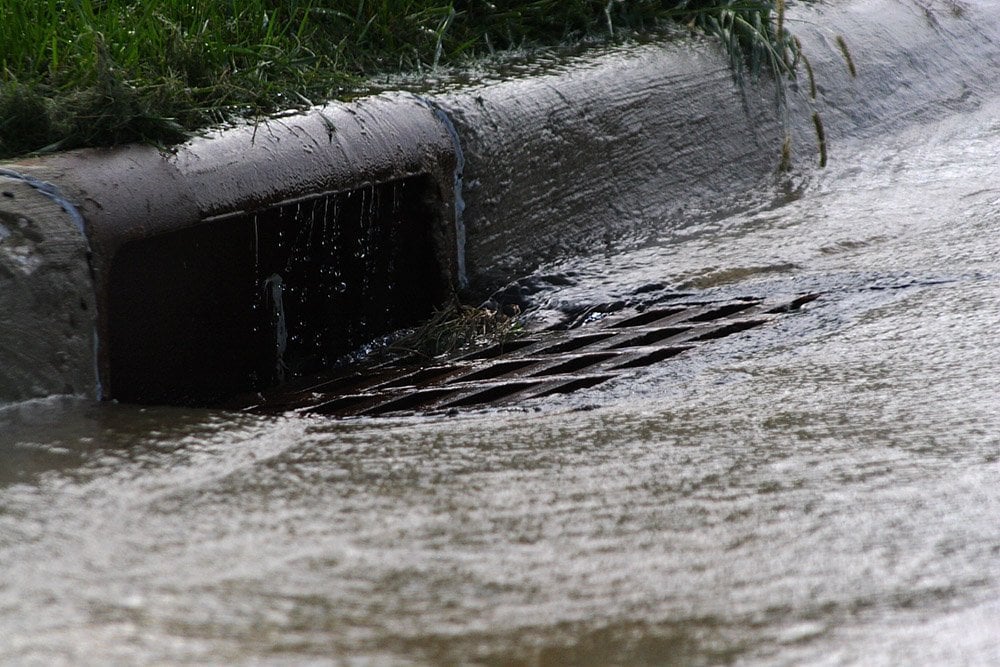 A storm drain curbside inlet
A storm drain curbside inlet
The two types of inlets connected to storm drains are side inlets and grated inlets. Side inlets consist of curbside inlets or any other inlet mounted along the sides of the curb. As for grated inlets, it mostly refers to catch basins or any inlets that require a grate cover over. That said, storm drain covers are mostly any grates or grills that are used to cover various mentioned inlet types and catch debris, rather than a specific product.
Point Drainage Cover
The same misconception as storm drain covers, point drainage covers are not a specific product category but a range of them. Point drainage is categorized as a system of water draining. Unlike channel style drainage, where water runoffs collect along the entire channel length, point drainage allows the water to drain off at specific drainage points.
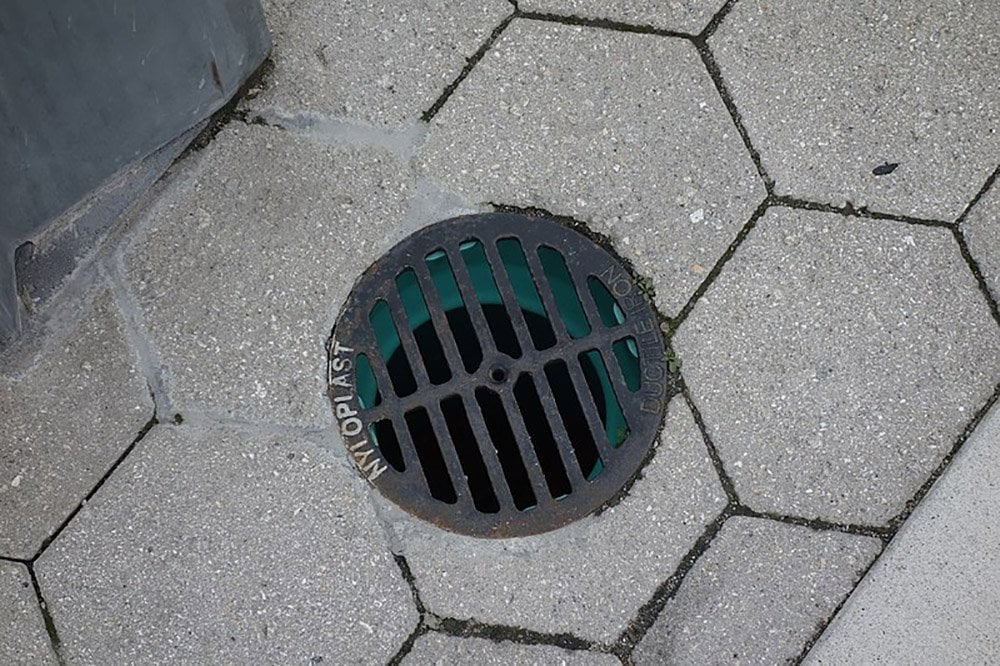 A single drain pipe in an area
A single drain pipe in an area
Catch basins, curbside inlets, and floor/gully traps are some examples of point drainage inlet products, whereby excess water is only drained off at the spot the drainage product is. In this case, point drain covers are grate covers for catch basins, floor trap covers, curbside inlet covers, or covers for ant drain products that drain at single points.
Sump Cover
Sump covers are often confused as two different product types. First is a sump cover used for covering a sump pump. This cover is usually circular shaped and with 1 or 2 holes for water pipes to pass through it. A sump pump and its lid are used mostly at the basements of houses, especially areas below ground that floods often since a sump pump collects and redirects the water out.
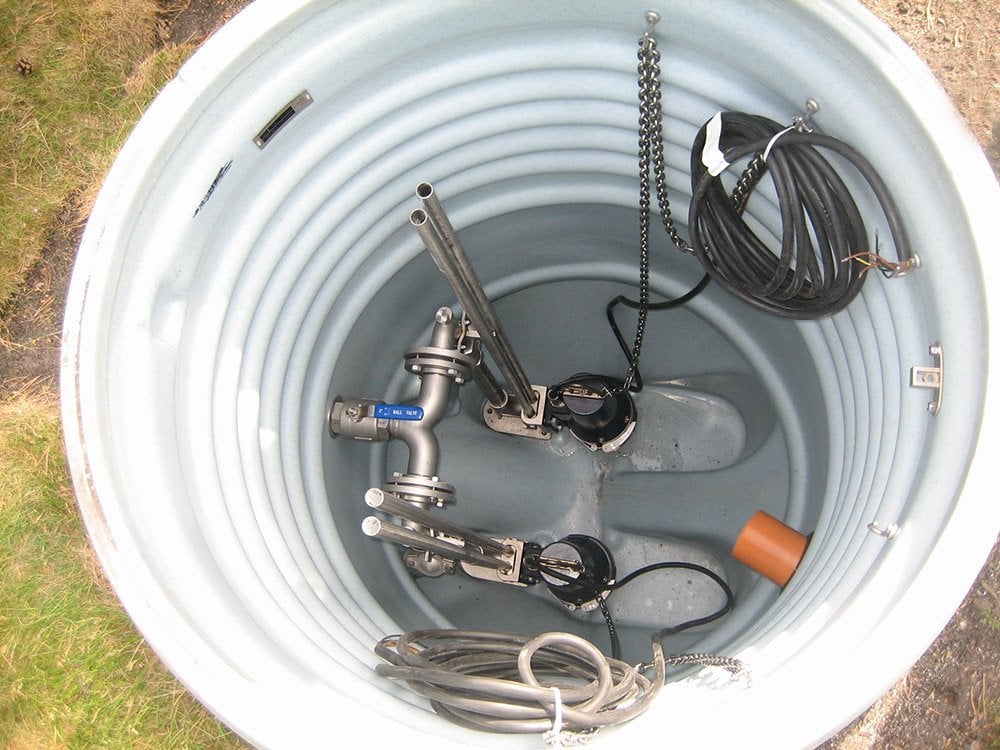 The internals of a sump pump
The internals of a sump pump
On the other hand, a sump cover can refer to covers for drainage inlets mounted in low areas. In this second reference, the word sump means the low/sunk-in spot of any areas or a dirt catchment container or space in catch basins. A sump cover, in this context of a sump, would be used for grates or covers for catch basins or any drainage products placed at lower spots of a particular space. It would make use of the depressed region to direct any water runoffs to that area than stagnant on even surfaces.
Catch Basin Cover
A catch basin's purpose is trapping debris that passed through its grate into a container below its water outlet pipe while letting water runoff be drained out into the sewers. A catch basin usually consists of a deep box with one or more water pipe exits. A grate seals the catch basin as an initial debris filter.
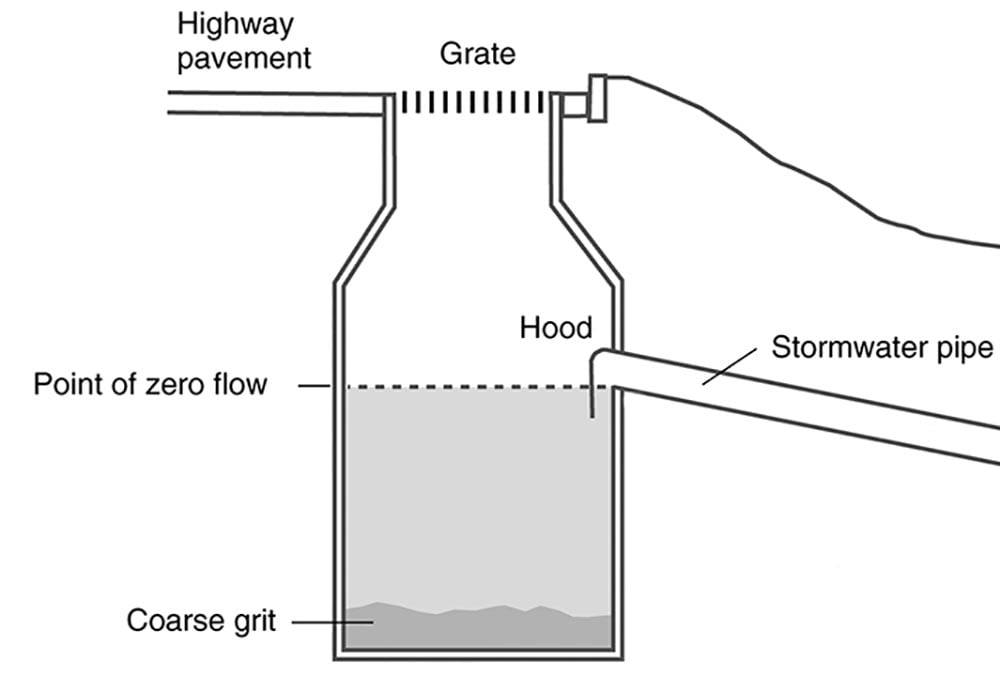 An illustration of the inside of a deep catch basin
An illustration of the inside of a deep catch basin
Catch basins are used mostly on roadsides, pedestrian spaces, or any spaces that rainwater comes into contact. In some cases, a small area around the basin is either raised or tapered towards the basin, creating a sump effect for water runoffs to flow directly to the basin. Size-wise, an average catch basin opening & grate/cover are around 1 inch by 1 inch, though some manufacturers do provide bigger sizes, depending on the drainage need of the space.
Manhole cover
A manhole cover (a.k.a maintenance hole cover) is a cover that seals over the opening of a maintenance hole, a human-sized opening that is used to access the drainage for maintenance and other works. A manhole cover is one of the few covers that does not have through slots or gaps covering the entire lid, just a bare solid surface, though specific manhole covers do have unique pattern designs or artwork on its surface. In some cases, manhole covers do have a couple of small slots but mostly to let light through or as pick holes for lifting the lid.
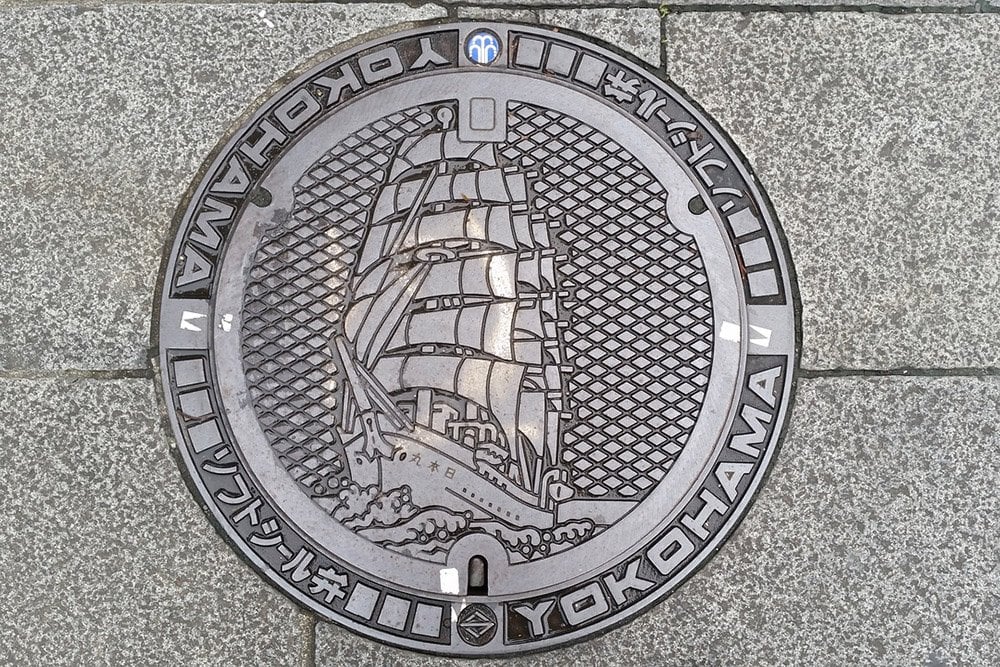 A decorated manhole cover in Yokohama, Japan
A decorated manhole cover in Yokohama, Japan
Manhole covers are one of the heaviest, made with cast iron, concrete, or a mix of them, reducing chances of theft or sucked up by traffic above. Many covers are also locked with a piece of specialized equipment, allowing only registered workers with the special tools to open the covers and no one else. Shape wise, a majority of maintenance hole covers are circular, with some cases of a square, rectangle, or triangle shaped.
Access cover
Similar to maintenance hole covers, access covers are for sealing access holes to underground utilities. However, its for maintenance and inspection of electric cables, plumbing, heating, and ventilation than drainage. An access cover can be in many places like roads, pavements, car parks, driveways, and internal floors. These covers are lighter than manhole covers, but with the same unique locking, for single workers to lift open easily, especially for lids that seal areas requiring frequent checks.
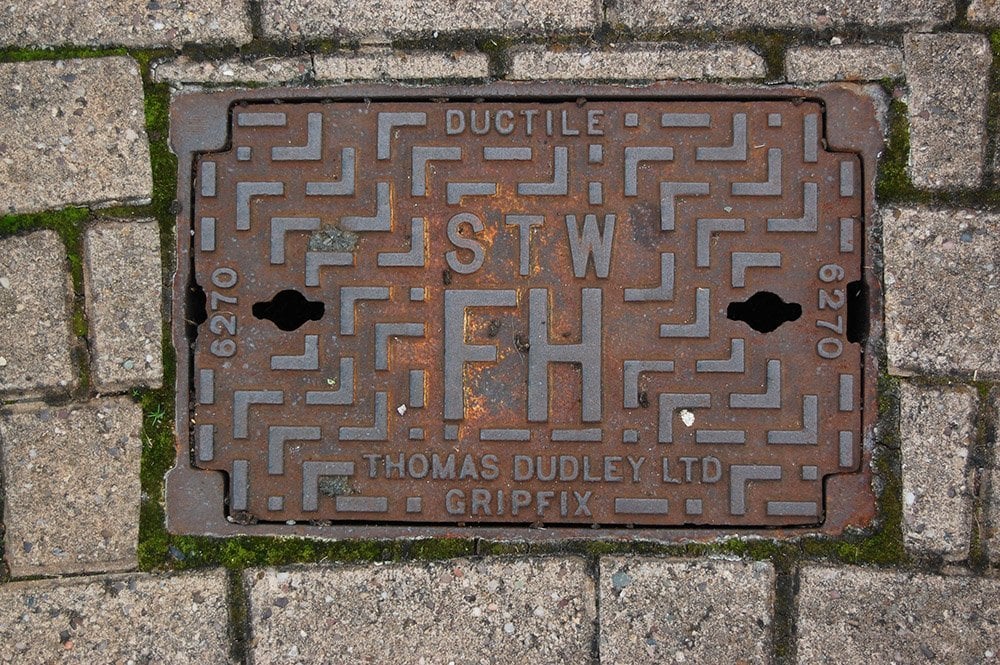 An access cover along the streets
An access cover along the streets
A majority of access covers come in a square or rectangular shape with two pick holes on both ends. One key difference between access and manhole covers are that access covers have better designs, aesthetically. As access covers are sometimes placed indoor, the cover surface comes in a variety of designs and colors to match its surrounding space design, such as covers decorated with the same tiles as its surrounding pavements.










